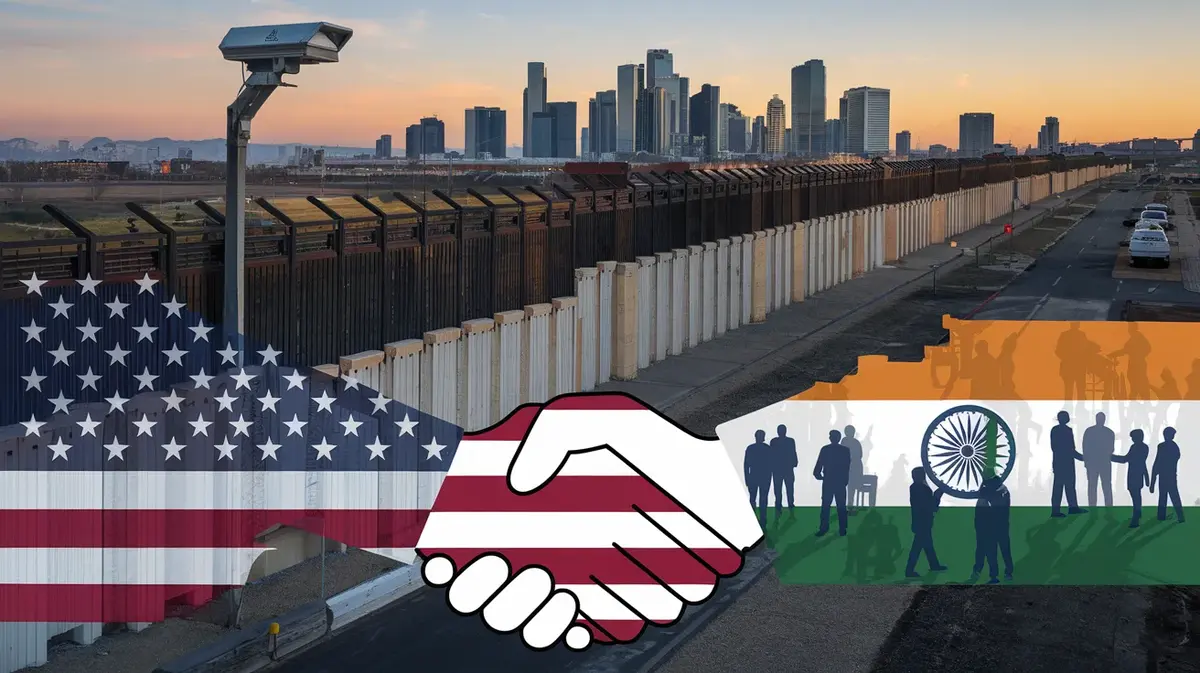Introduction
Immigration has always been a cornerstone of the American dream, shaping the nation’s economy, culture, and global standing. In 2025, Donald Trump has once again taken a firm stance on immigration, introducing policies that prioritize an “America First” approach. But are these measures truly strengthening the economy, or are they creating barriers to growth? In this article, we’ll explore the key features of Trump’s immigration policies, their economic impact, India’s influence, and the broader implications for America’s future.
Understanding Trump’s Immigration Policies in 2025
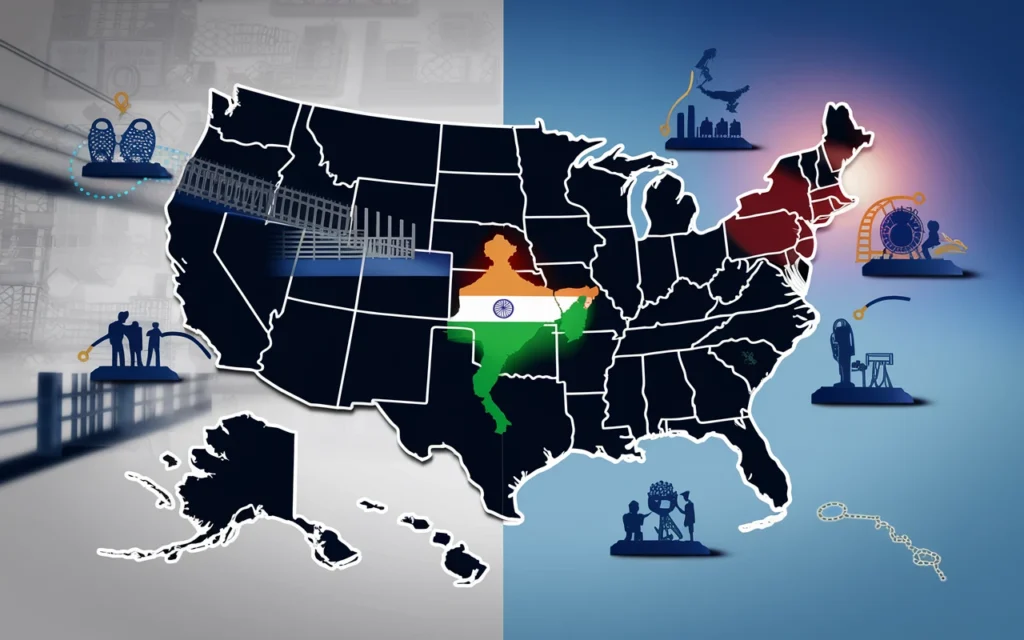
Donald Trump’s Immigration law in 2025 mark a continuation of his “America First” agenda, emphasizing stricter immigration controls and a significant shift in the country’s approach to immigration. These policies are characterized by three main elements: tighter border controls, efforts to curb illegal immigration, and a pivot to merit-based visa systems. While these measures aim to protect American jobs and prioritize skilled labor, they come with complex trade-offs that have sparked debates nationwide.
Key Features of the 2025 Policies
Stricter Border Controls
Trump’s administration has doubled down on physical and technological barriers along the U.S.-Mexico border, including expanded wall construction and advanced surveillance systems. Enhanced border patrol resources and stricter entry protocols have been implemented to deter illegal crossings.
Reduction in Illegal Immigration
Significant efforts have been made to identify and deport undocumented immigrants, particularly those with criminal records. Employers face harsher penalties for hiring undocumented workers, aiming to reduce the availability of jobs for unauthorized individuals.
Merit-Based Visa Allocations
The policy shifts focus toward merit-based immigration, prioritizing skilled professionals who contribute to the U.S. economy. Family-based immigration channels have been significantly curtailed, reducing the ability of immigrants to bring relatives into the country.
Comparing 2025 Policies with Previous Administrations
Under the Biden administration, Undocumented immigrants leaned heavily toward inclusivity, offering pathways to citizenship for undocumented immigrants and expanding refugee quotas. Biden’s approach aimed to restore America’s reputation as a welcoming nation for immigrants.
In stark contrast, Trump’s 2025 policies are reminiscent of his earlier term, emphasizing restrictionism. The focus has shifted back to controlling immigration numbers and reshaping the demographics of the immigrant workforce to align with economic priorities. This stark ideological divide highlights the broader tension between national security and economic protectionism versus inclusivity and humanitarian values.
The Impact on America’s Economy

Effects on the Labor Market
Trump’s policies could lead to labor shortages in industries such as agriculture, construction, and healthcare—sectors heavily reliant on immigrant workers. While aiming to protect American jobs, these restrictions might inadvertently harm businesses that depend on a steady labor supply.
On the high-skilled labor front, prioritizing merit-based visas could benefit tech and engineering sectors by attracting top global talent. Yet, cutting family-based immigration channels raises concerns about reduced diversity and the long-term socio-economic effects on immigrant communities.
Trump’s Deportation rules in 2025 reflect his administration’s effort to align immigration practices with nationalistic and economic goals. While the focus on border security and skilled immigration may bring short-term gains, the broader implications for innovation, diversity, and America’s global standing remain areas of contention. This shift from inclusivity to restrictionism underscores a deeper ideological divide in America’s immigration debate, with lasting consequences for the nation’s economic and cultural fabric.
Immigration’s Role in Innovation and Entrepreneurship
Immigrants have historically driven innovation in the U.S., founding companies like Google and Tesla. Limiting the influx of skilled workers could stifle innovation, impacting America’s competitive edge globally.
The Influence of India on America’s Economy
India has emerged as a vital player in shaping the U.S. economy, particularly through its significant contribution to the skilled workforce and potential for strategic collaboration. From dominating the tech industry to fostering cross-border partnerships, India’s influence on America’s economic landscape is undeniable. However, restrictive policies like those implemented under Trump’s administration could have profound implications for this relationship.
India’s Contribution to the Skilled Workforce
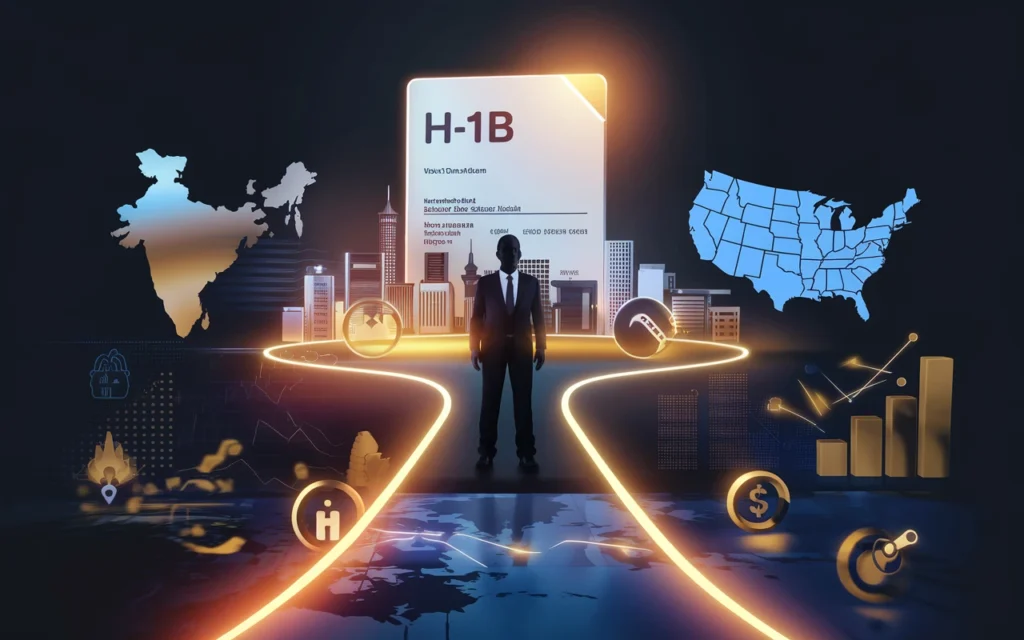
- Dominance in the H-1B Visa Program
Indian professionals hold a lion’s share of the H-1B visas issued by the U.S. each year. These visas are primarily granted to highly skilled individuals in fields like technology, healthcare, and engineering. By filling critical skill gaps, Indian workers play a crucial role in driving innovation and maintaining America’s competitive edge in global markets. - Technological Advancements
Companies like Google, Microsoft, and other tech giants have Indian-origin leaders or rely heavily on Indian talent. This workforce not only contributes to the success of individual companies but also enhances the overall technological landscape of the U.S., enabling advancements in artificial intelligence, cybersecurity, and software development. - Economic Impact of Indian Talent
Indian professionals and entrepreneurs contribute billions of dollars to the U.S. economy through taxes, business innovations, and job creation. They play a pivotal role in the growth of industries such as information technology, healthcare, and education, further solidifying America’s position as an economic powerhouse.
Collaborative Potential with India
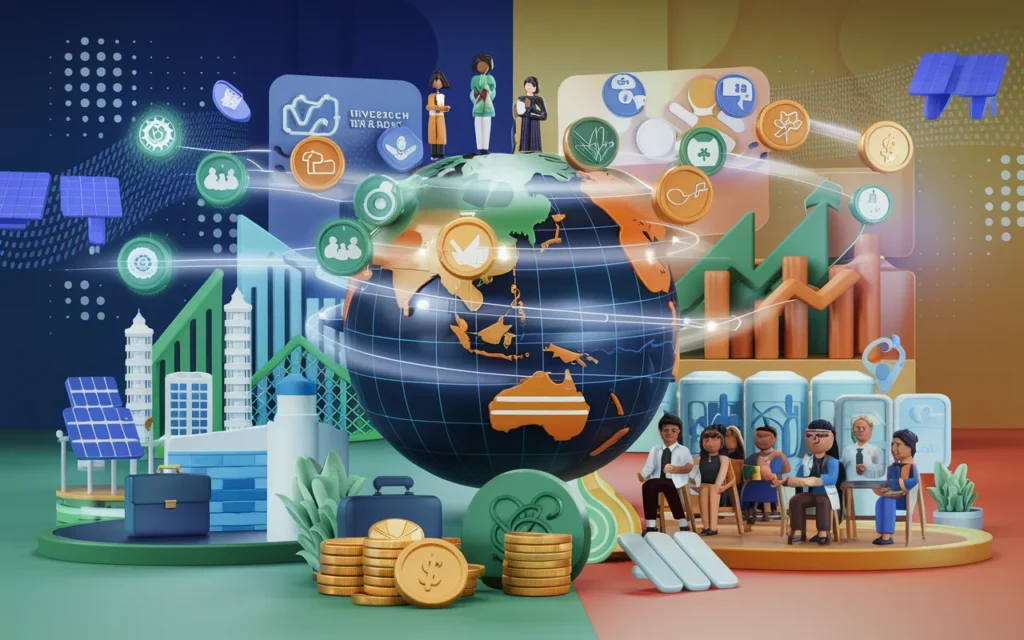
- Shared Technological and Economic Goals
India’s booming tech industry and growing economy make it a strategic partner for the U.S. Collaborating on innovations such as clean energy, digital infrastructure, and healthcare solutions could unlock massive economic growth for both nations. - Trade and Investment Opportunities
Strengthening trade agreements and encouraging investment from Indian companies in the U.S. can lead to mutual economic benefits. Indian conglomerates, like Tata Group and Infosys, have already made significant investments in American markets, creating thousands of jobs and boosting local economies. - Cultural and Educational Exchange
The large Indian diaspora in the U.S. serves as a bridge for cultural and educational exchanges, fostering better understanding and collaboration between the two nations. Programs promoting higher education and research partnerships could further strengthen economic ties.
Challenges Under Restrictive Policies
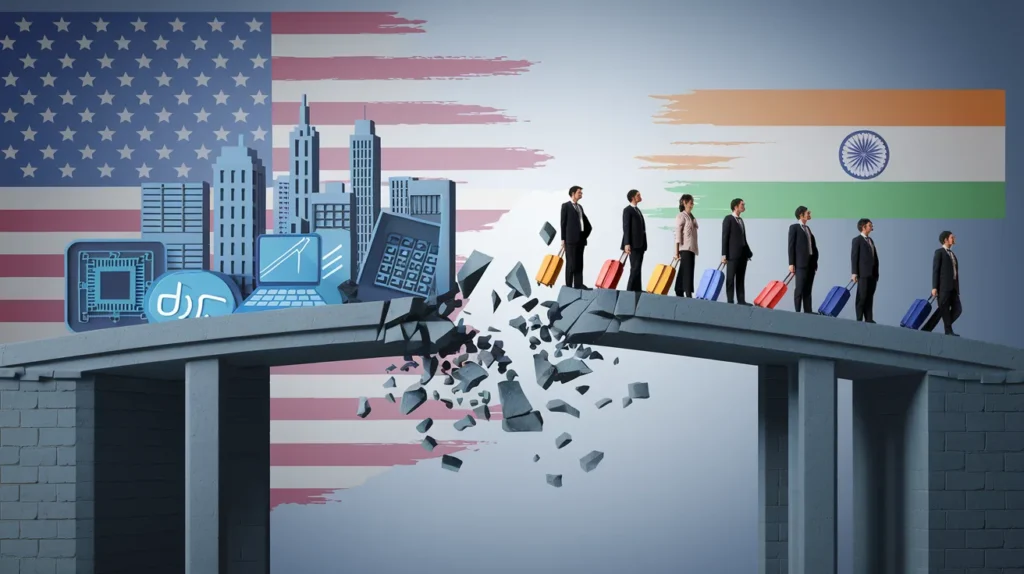
- Impact of Immigration Restrictions
Trump’s Immigration Policies, particularly reductions in H-1B visa allocations and family-based immigration channels, could disrupt the flow of Indian talent to the U.S. This could result in skill shortages, particularly in the tech sector, and limit the innovative capacity of American companies. - Straining Diplomatic Relations
Restrictive policies might lead to diplomatic tensions, reducing the willingness of Indian businesses to invest in the U.S. and potentially redirecting Indian talent and resources to other countries with more welcoming Immigration reform. - Missed Opportunities for Collaboration
Without fostering strategic dialogue and collaboration, the U.S. risks missing out on opportunities to co-develop technologies, enter new markets, and strengthen global economic leadership through a robust U.S.-India partnership.
Discussing Ideas vs. Instant Applications
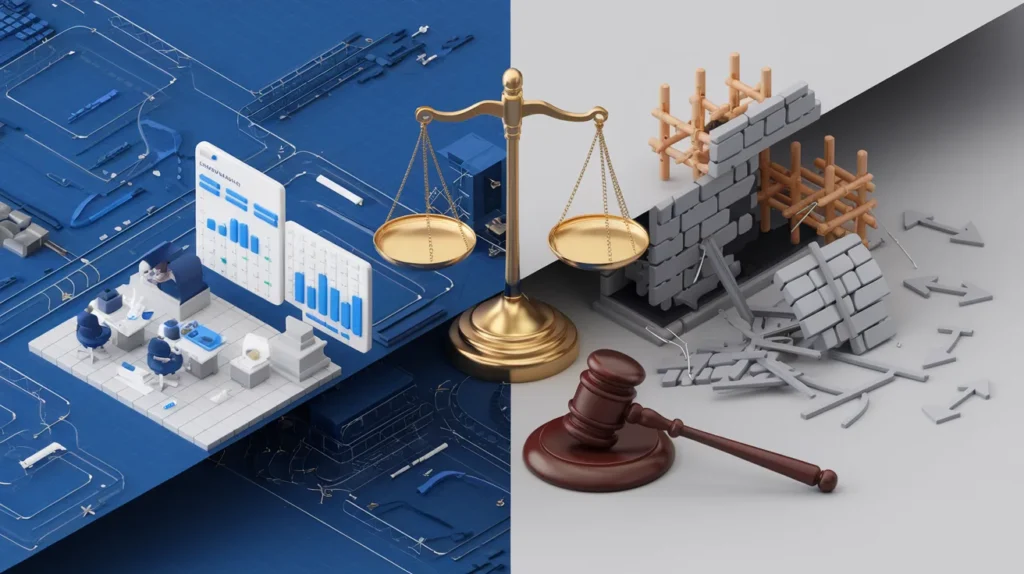
The Value of Strategic Planning
Strategic planning in immigration policy allows for sustainable, long-term growth. Drawing inspiration from India’s methodical economic strategies, the U.S. could benefit by focusing on well-thought-out reforms that balance workforce needs and economic priorities. A measured approach ensures that policies are adaptable and effective in addressing current and future challenges.
Risks of Hastily Applied Policies
History has shown that rushed Undocumented immigrants can lead to unintended consequences such as economic instability, workforce shortages, and legal challenges. Quick fixes often overlook the complexities of immigration dynamics, leading to disruptions that take years to resolve. A balanced, deliberate approach is essential to create reforms that are both fair and economically beneficial.
The Civil Rights Movement and Its Legacy on Immigration

The 1960s and a Shift in Policy
The civil rights movement paved the way for the Immigration and Nationality Act of 1965, which abolished discriminatory quotas. This pivotal moment reshaped America’s demographic landscape.
Lessons for Modern Policymakers
Modern policymakers can learn from the civil rights era’s focus on inclusivity and equity, applying these principles to current immigration debates.
Why Is President Donald Trump Doing This?

Donald Trump’s Immigration reform are shaped by both political motives and broader ideological goals, reflecting his administration’s priorities and strategies.
Political Motives Behind the Policies
Trump’s hardline stance on immigration resonates strongly with his core voter base, which largely supports stricter border controls and measures aimed at protecting American jobs. By focusing on these issues, Trump strengthens his appeal to voters who prioritize national security, economic stability, and reduced immigration. These policies also form a central part of his broader political strategy, particularly in maintaining support from his base and energizing them for re-election campaigns. The emphasis on immigration aligns with campaign rhetoric, portraying him as a leader who prioritizes the interests of American citizens.
Broader Ideological Goals
Beyond immediate political gains, Trump’s Green card process reflect a nationalist vision that seeks to reshape America’s demographic and cultural landscape. His approach often emphasizes preserving what he and his supporters perceive as traditional American values and identity. This agenda influences not only immigration restrictions but also broader policy decisions, underscoring a desire to limit cultural and demographic shifts that come with increased immigration. By intertwining nationalism with governance, Trump’s administration positions immigration as a central issue in defining America’s future direction.
Together, these political and ideological factors underscore the motivations behind Trump’s Deportation rules, making them a key focus of his presidency.
Conclusion
Donald Trump’s immigration policies in 2025 are a double-edged sword. While they aim to protect American jobs and security, they risk undermining the economy by restricting talent and labor. A balanced approach, incorporating strategic planning and collaboration with nations like India, could pave the way for sustainable growth. America’s future depends on finding common ground in the immigration debate.
FAQs

- What are the major changes in Trump’s 2025 immigration policies?
Stricter border controls and a shift toward merit-based visa allocations are key features. - How do these policies impact industries reliant on immigrant workers?
They may lead to labor shortages, especially in sectors like agriculture and healthcare. - What is India’s role in the U.S. tech and innovation sectors?
Indian professionals contribute significantly to America’s technological advancements. - How did the civil rights movement influence immigration reform?
It paved the way for inclusive policies like the Immigration and Nationality Act of 1965. - What are the long-term implications of Trump’s policies on America’s economy?
While aiming to protect American workers, these policies might hinder innovation and growth.
Other Related Blog
And if you’re interested in learning more tips and tricks for everyday wellness, feel free to check out my other blogs—they cover a wide range of topics to help you feel your best, no matter the situation!
https://whimsyfy.com/best-watch-brands-luxury-to-affordable-under-1000/
https://whimsyfy.com/can-headphones-cause-hair-loss-science-prevention/


